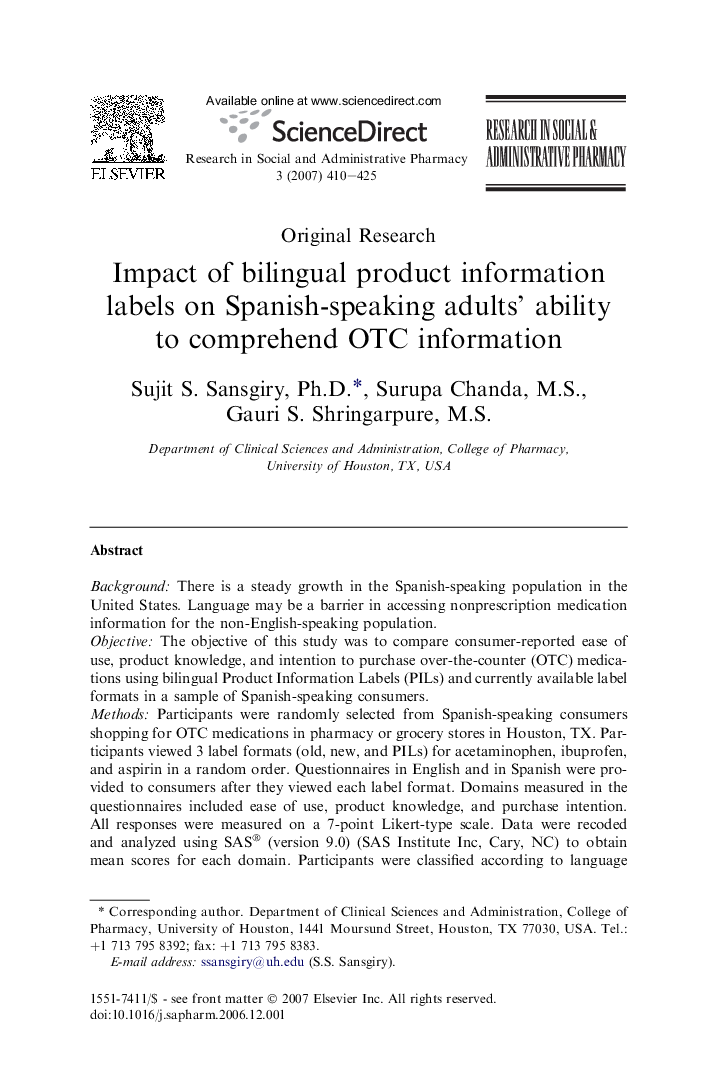| Article ID | Journal | Published Year | Pages | File Type |
|---|---|---|---|---|
| 2509015 | Research in Social and Administrative Pharmacy | 2007 | 16 Pages |
BackgroundThere is a steady growth in the Spanish-speaking population in the United States. Language may be a barrier in accessing nonprescription medication information for the non-English-speaking population.ObjectiveThe objective of this study was to compare consumer-reported ease of use, product knowledge, and intention to purchase over-the-counter (OTC) medications using bilingual Product Information Labels (PILs) and currently available label formats in a sample of Spanish-speaking consumers.MethodsParticipants were randomly selected from Spanish-speaking consumers shopping for OTC medications in pharmacy or grocery stores in Houston, TX. Participants viewed 3 label formats (old, new, and PILs) for acetaminophen, ibuprofen, and aspirin in a random order. Questionnaires in English and in Spanish were provided to consumers after they viewed each label format. Domains measured in the questionnaires included ease of use, product knowledge, and purchase intention. All responses were measured on a 7-point Likert-type scale. Data were recoded and analyzed using SAS® (version 9.0) (SAS Institute Inc, Cary, NC) to obtain mean scores for each domain. Participants were classified according to language proficiency into “Spanish only” and bilinguals. Comparative statistics were computed to compare mean scores between label formats in each consumer category.ResultsA total of 225 questionnaires were collected. The mean (±standard deviation) age of participants was 38.91 (±11.95) years. A majority of respondents were Hispanic (97.75%), female (60.54%), and married (62.44%). Mean scores from viewing PILs on ease of use, product knowledge, and purchase intention were higher than those from viewing the other label formats. In the category of consumers who spoke Spanish only, mean scores of PILs were significantly higher as compared to those of old and new label formats (P < .05).ConclusionInformation provided in Spanish on PILs may be very helpful to the Spanish-speaking community when selecting nonprescription medications. Policy makers and health care providers should consider PILs as an effective means of reducing language barriers and providing OTC medication information to the Spanish-speaking population in the United States.
